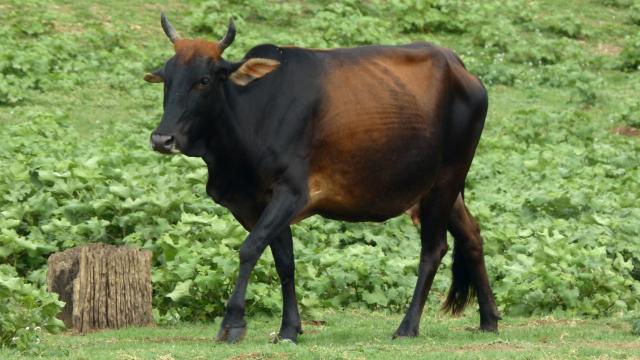Scientists have found evidence of Bronze Age human civilisation written into ancient cattle DNA, according to a new study.
The research team collected and sequenced DNA samples from ancient domesticated and wild cattle, or aurochs, to tell the story of cattle domestication in the Fertile Crescent, a region today defined as the Middle East and the Levant. The results reveal a sudden introduction of DNA from a different cattle breed originating in the Indus Valley – perhaps the result of humans adapting to a sudden change to the climate.
“Ancient DNA gives you a window into the past that you don’t get with modern genetics, especially for domesticated animals and species that have been artificially selected and have been manipulated by humans,” study first author Marta Verdugo, now a technical support specialist at Oxford Nanopore Technologies, told Gizmodo.
Cattle originate from an animal called the Eurasian auroch, and were first domesticated by early human civilisation in the Fertile Crescent—but scientists don’t know the full story of how the extinct auroch became today’s domestic farm cows.
For example, it’s unclear how modern Middle Eastern cattle herds (derived from Bos taurus cattle of European origin) contain so much DNA from the South Asian subspecies of zebu cattle, which are “as different as humans and Neanderthals,” explained study author Daniel Bradley from Trinity College. Perhaps wild aurochs exchanged DNA between herds – or maybe cattle farmers actively bred the two.
They extracted DNA from 67 ancient bovine samples and analysed the origins of their genetic code. The first few thousand years of domestic cattle mark a diverse array of origins, with various introductions of auroch DNA.
Though zebu cattle date back to 8000 years ago, and though there’s other evidence of Indus Valley and Fertile Crescent civilizations interacting with one another, the scientists didn’t detect zebu DNA in ancient Middle Eastern cattle genomes until 4000 years ago, according to the paper published in Science.
But then, approximately 4000 years ago, hybrid animals with large amounts of zebu DNA began to appear in the dataset.
That 4000 year mark aligns with another important time in human civilisation: a period of climate change and a long drought, as well as the declines of empires in the Fertile Crescent, Egypt, and the Indus Valley.
The scientists behind the study hypothesised that people were intentionally introducing more drought-tolerant zebu cattle into their flocks to cope with the environmental changes. That influence remains present in today’s domestic cattle.
Studying ancient DNA has its challenges, of course. DNA degrades over the centuries since there are no biological processes to maintain it, and this degradation occurs faster in warm environments.
Verdugo explained that one dense piece of the skull’s temporal bone, called the petrous part, is especially good at preserving ancient DNA. Ultimately, they were able to get 0.9x average coverage, meaning that on average, the chance of every bit of the genome being covered once is around 90 per cent. That’s not very high compared to modern genome sequencing, but hey, this DNA is thousands of years old.
The research is “fantastic,” said Laurent Frantz, a lecturer in molecular genetics and informatics at Queen Mary University of London who was not involved in the study. Frantz told Gizmodo that the ancient DNA methodology captures insights potentially missed by sequencing from mitochondrial DNA, since it was likely bulls introducing their DNA into the herd, and mitochondrion are (typically) inherited only from the mother. He thought that the the massive influx of zebu DNA at such a precise time isn’t completely unexpected, and validates some long-held archaeological theories.
He cautions that the reason for the influx of zebu DNA isn’t certain yet, and the quality of the data likely isn’t sufficient to validate the hypothesis that they were introduced because they were hardier in arid environments. “The next step is to really validate the hypothesis, that there was a biological reason for this and not just an influx of zebu because of some other reason that had nothing to do with climate.”
There are certainly other stories of early civilisation (and cattle) written in this ancient DNA, as aurochs interacted with these nascent domestic herds. It’s just a matter of finding and sequencing this ancient DNA before it’s lost to the sands of time.
